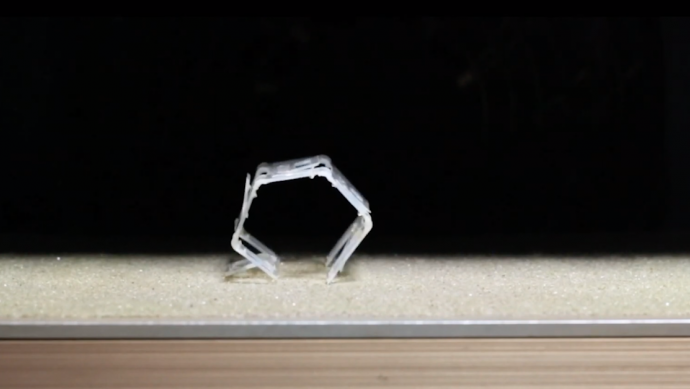Soft robots have traditionally had to rely on a power source. A Caltech team has created a solution.
Source: Interesting Engineering
Soft robotics is a subfield of robotics that makes robots out of compliant and malleable materials.
This, in principle, allows robots to be more lifelike, and potentially allows them to navigate and interact with their surroundings easily.
The problem? Soft robotics has traditionally had to rely on its creations being tethered to electronic cables, or air compression devices. Now, a group of researchers from Caltech is working on a solution.
‘Squidgy’ machines
Robots such as the octopus-inspired octobot created by researchers in Italy have shown the potential of soft robots. Engineers say this subfield of robotics has potential applications for space travel, health care, and other fields.
The fact that the robots are soft means that they can, in theory, get through smaller areas, can grip objects or people without harming them.
As with the octopus-inspired robot, these soft robots have always had to be tethered.
Origami-inspired robots
Now, researchers from the Harvard John A. Paulson School of Engineering and Applied Sciences (SEAS) and the Caltech Division of Engineering and Applied Science have developed origami-inspired soft robotic systems.
These can move and change shape in response to external stimuli. This, the researchers say, can pave the way for fully untethered soft robots.
The research, published in Science Robotics, outlines how the team used materials known as liquid crystal elastomers that change shape when exposed to heat.
The team says origami was an inspiration for creating their multifunctional soft robots. They 3D-printed two types of soft hinges that fold at different temperatures. As such, they can be programmed to fold in a specific order.
To demonstrate their methods, the team built several robots, including an untethered soft robot nicknamed the “Rollbot.” The Rollbot is a flat sheet, approximately 8 centimeters long and 4 centimeters wide until it is placed on a hot surface – heat makes the hinges fold and the robot curl into a pentagonal wheel.
The best of both worlds
The hinge-function created by the Caltech team could give soft robots the benefits of soft robotics as well as the robustness of traditional robotics.
The hinges are malleable but can be attached to harder materials. This would mean that the robot could more easily be configured to set measurements – a difficulty of soft robotics.
Setting soft robots free
As the robotic hinges rely on external stimuli, they also allow the soft robotic devices to operate without a tether.
“These untethered structures can be passively controlled,” Arda Kotikian, a graduate student at Caltech’s School of Engineering and Applied Sciences, explained in a press statement. “In other words, all we need to do is expose the structures to specific temperature environments, and they will respond according to how we programmed the hinges.”
This could allow some particularly impressive capabilities for soft robotics in the future.
“Many existing soft robots require a tether to external power and control systems or are limited by the amount of force they can exert. These active hinges are useful because they allow soft robots to operate in environments where tethers are impractical and to lift objects many times heavier than the hinges,” said Connor McMahan, a graduate student at Caltech and co-first author of the paper.
The team hopes their work will start a whole new chapter in what is already an extremely promising subfield of robotics.

































Leave a Comment
You must be logged in to post a comment.